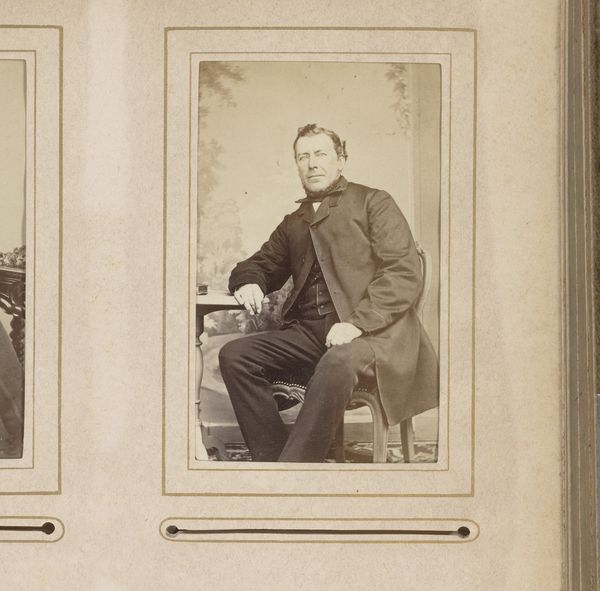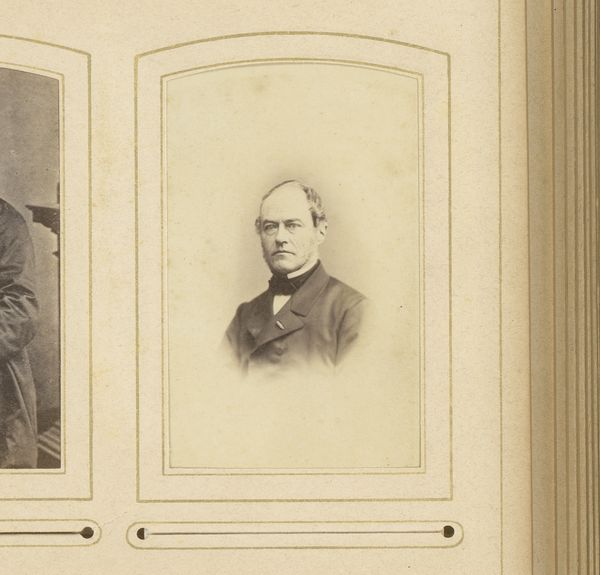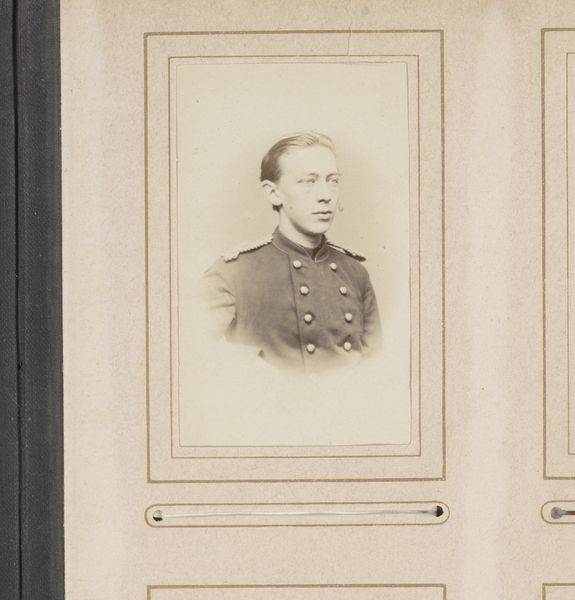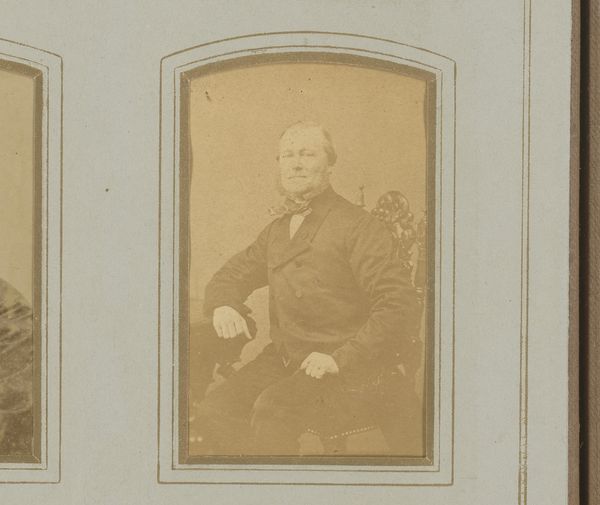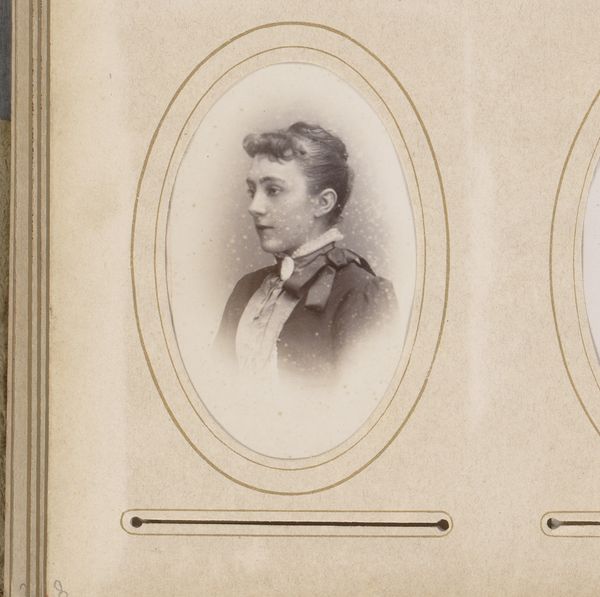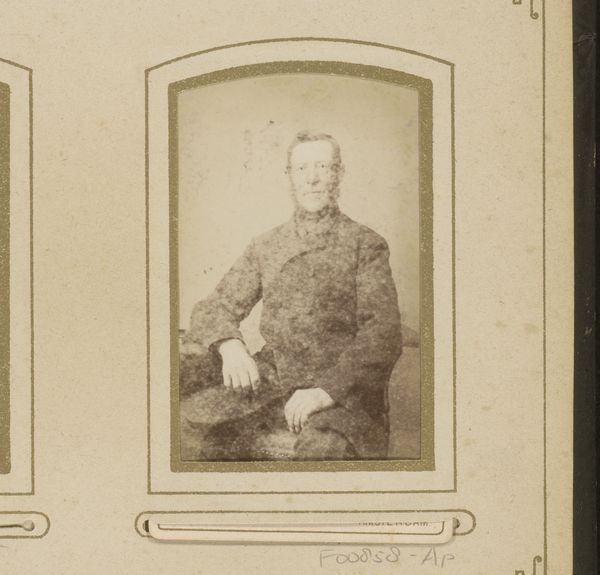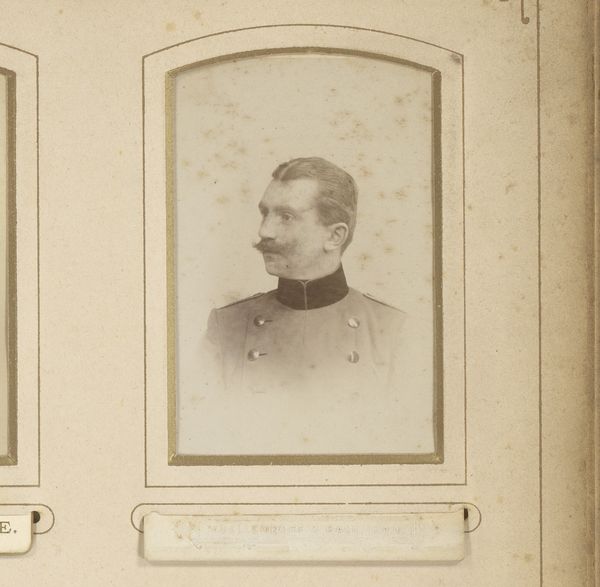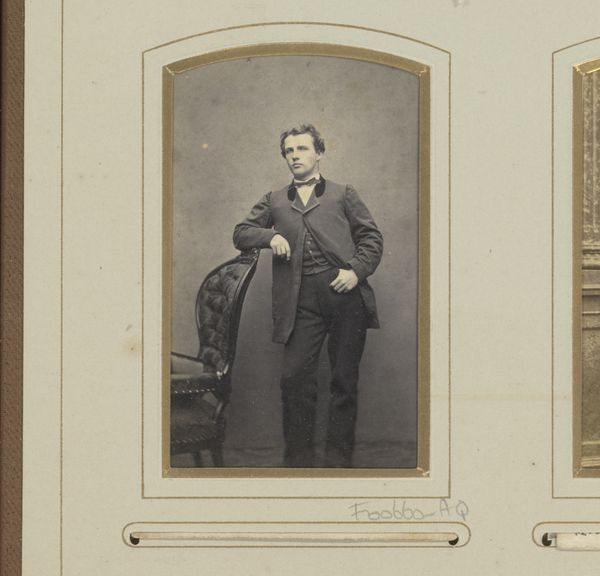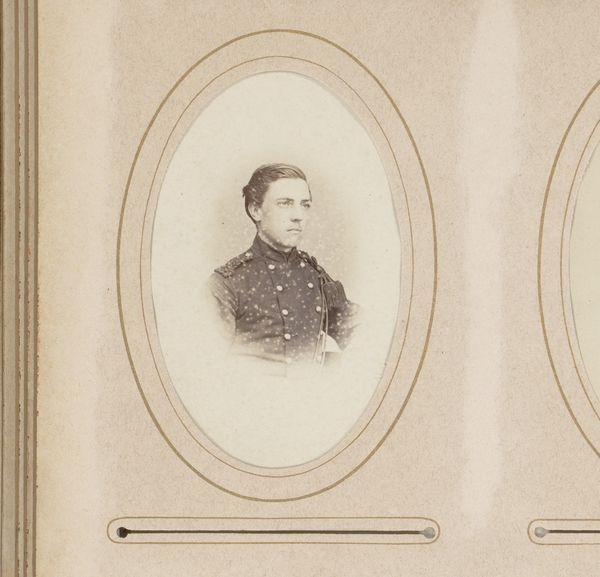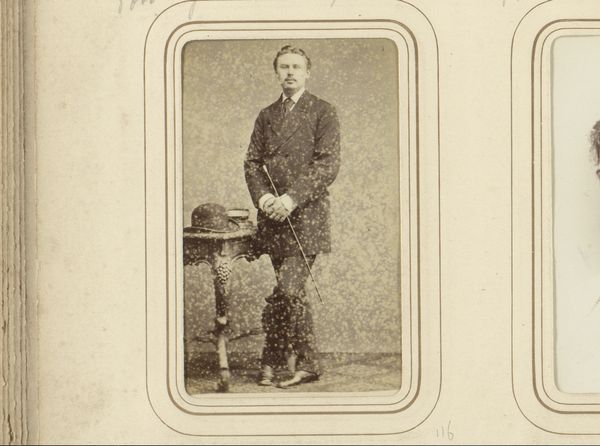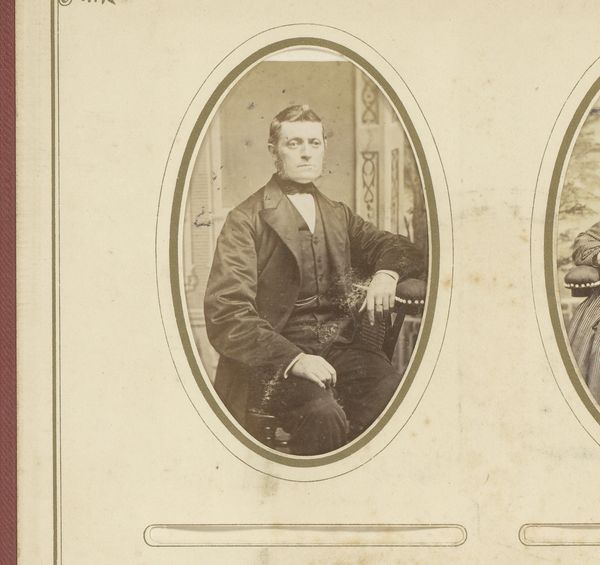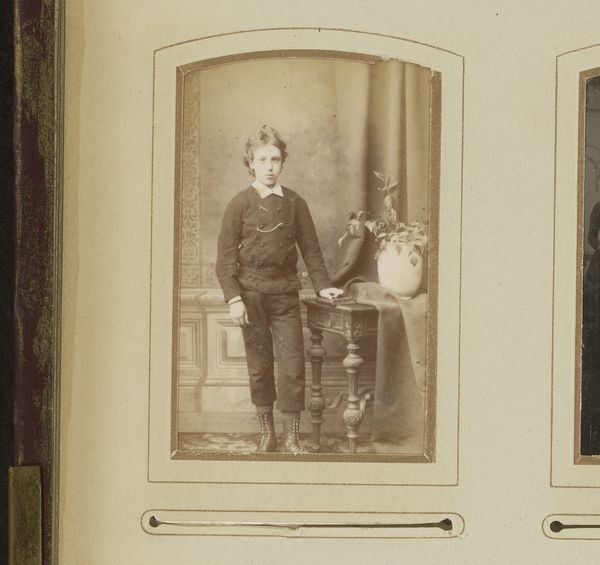
photography, albumen-print
#
portrait
#
charcoal drawing
#
photography
#
albumen-print
#
realism
Dimensions: height 84 mm, width 53 mm
Copyright: Rijks Museum: Open Domain
Editor: So, we're looking at a photo titled "Portret van een man met jas, staand bij een zuil" or "Portrait of a Man with Coat, Standing by a Pillar" made around 1867. It's an albumen print, giving it a kind of sepia-toned feel. I’m struck by the subject's pose – so deliberate and posed, right next to the column. What stands out to you? Curator: The pillar is quite evocative, isn’t it? In portraiture, pillars often stand as symbols of steadfastness, moral virtue, and even civilization. He is literally leaning on these ideals, linking himself to something considered virtuous and timeless. Note the soft curtain in the background - another symbol? Editor: Perhaps of domesticity, something grounding? Do you think that contrasts with the solid permanence of the pillar? Curator: It could be! Consider how these images, albumen prints, were carefully composed. He likely selected this backdrop and chose that specific pillar. How does the way he presents himself relate to our modern notions of masculinity, say, in photography today? Editor: That’s a great point! I wonder how different he thought he would be perceived back then versus now, through our eyes? It also brings up that issue of "performing" masculinity, constructing this almost theatrical image. Curator: Exactly. He is performing permanence and a certain kind of power, associating himself with these powerful symbols that reach far into history and collective understanding. Do you notice how his gaze doesn't quite meet ours? What meaning do you take from that? Editor: Yes! It suggests almost a deliberate remove, that he exists outside our current realm of experience. Almost unapproachable and aloof... this really does invite a different kind of reading now that I'm attuned to that element! Thanks for illuminating those symbolic details for me! Curator: And thank you, for connecting the enduring symbolism to shifting cultural performances. These images, though still, become dynamic when we consider how time shapes their meanings.
Comments
No comments
Be the first to comment and join the conversation on the ultimate creative platform.
